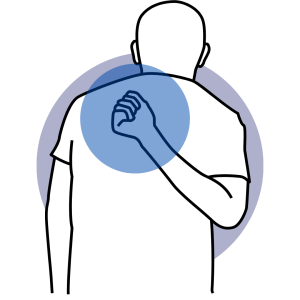
SKOLYOSE
Scoliosis is a condition defined as a sideways curvature or rotation of the spine. Normally, the spine follows a regular alignment along a straight line, whereas with scoliosis, the spine curves incorrectly. Scoliosis usually occurs in the upper back (thoracic scoliosis) or lower back (lumbar scoliosis).
Causes:
Unknown Cause (Idiopathic Scoliosis):
Most scoliosis is idiopathic scoliosis, the cause of which cannot be determined. It usually occurs during adolescence.
Congenital Causes:
Congenital abnormalities in the structure of the spine can cause scoliosis.
Nervous System Diseases:
Conditions related to the nervous system can contribute to the development of scoliosis by affecting the balance of the spinal muscles.
Muscle Weakness or Imbalance:
Weakness or imbalance in the muscles around the spine can lead to the spine not being able to maintain its normal alignment.
Rheumatoid Arthritis and Other Metabolic Diseases:
Inflammatory conditions such as rheumatoid arthritis and certain metabolic diseases can increase the risk of scoliosis.
Trauma or Injuries:
Traumas or injuries to the spine can lead to the development of scoliosis.
Non-Surgical Treatment Methods:
Regular Checkups and Monitoring:
It is important to regularly check and monitor scoliosis before it reaches a certain degree of curvature.
Physical Therapy:
Special exercise programs with a physiotherapist can help strengthen spinal muscles and correct posture.
Use of Orthosis (Corset):
Specially designed braces can help prevent the progression of scoliosis or reduce the degree of curvature.
Exercise and Activity:
Appropriate exercises and activities can support spinal health and increase muscle strength.
Surgical Treatment Methods:
Scoliosis Surgery:
Scoliosis surgery is usually considered when the degree of curvature exceeds a certain level or does not respond to bracing or other conservative treatments. The spine is straightened and stabilized.
Surgical treatment is usually decided after taking into account the degree of curvature, the age of the patient, the severity of symptoms and other factors. In each case, it is important to consult a doctor and create an individualized treatment plan.




.png)
.png)
.png)